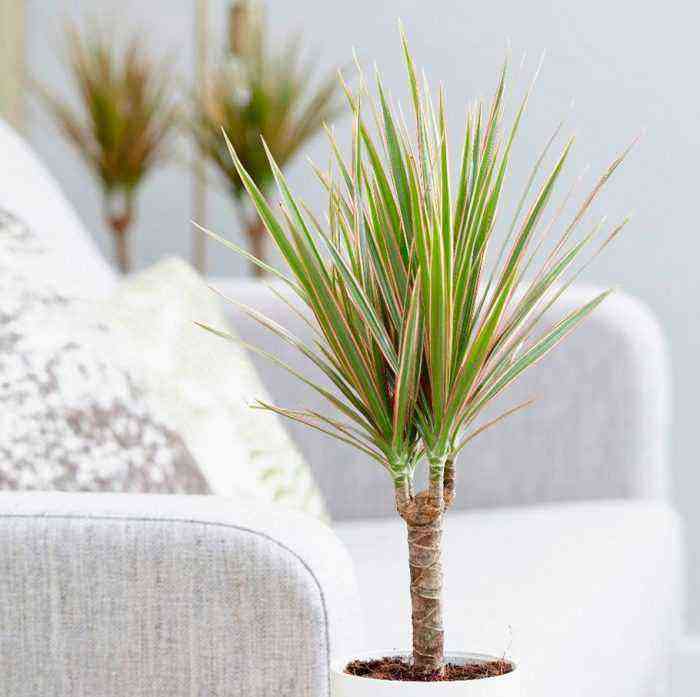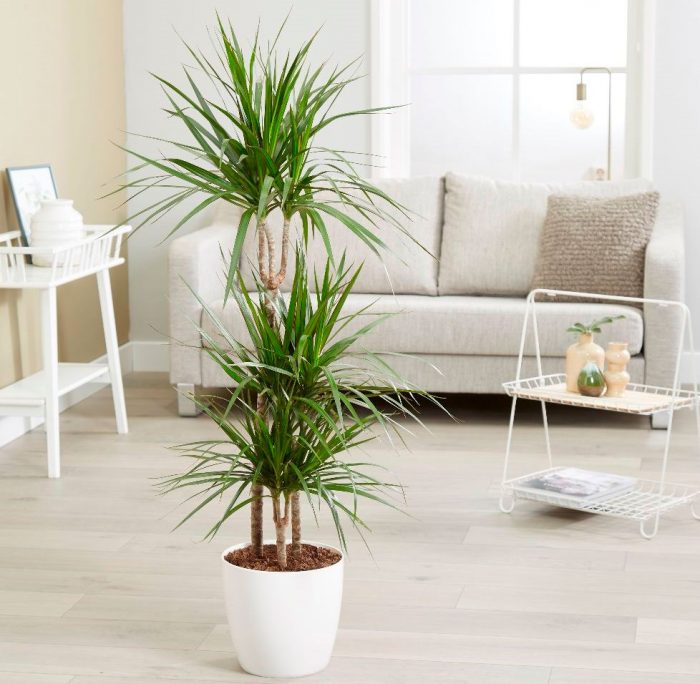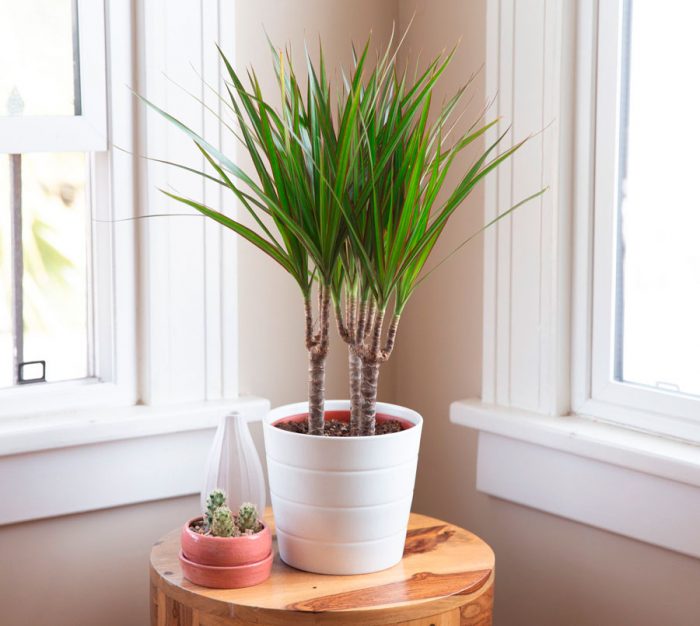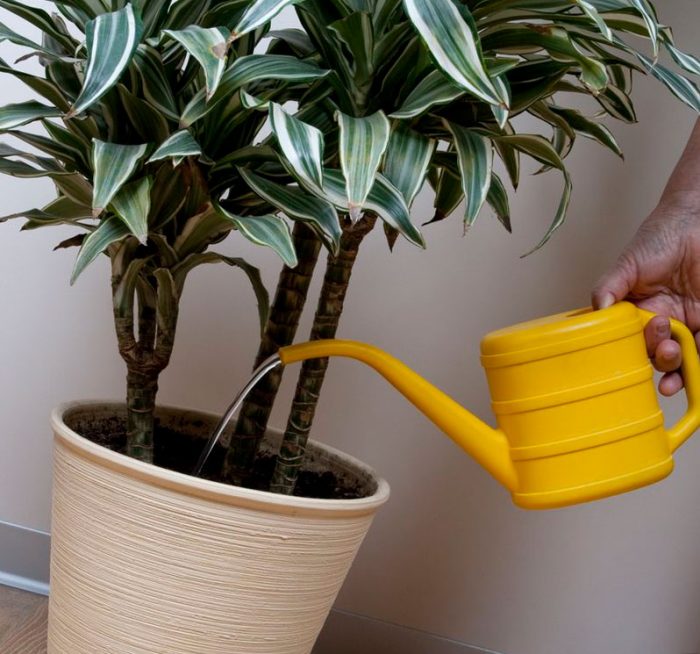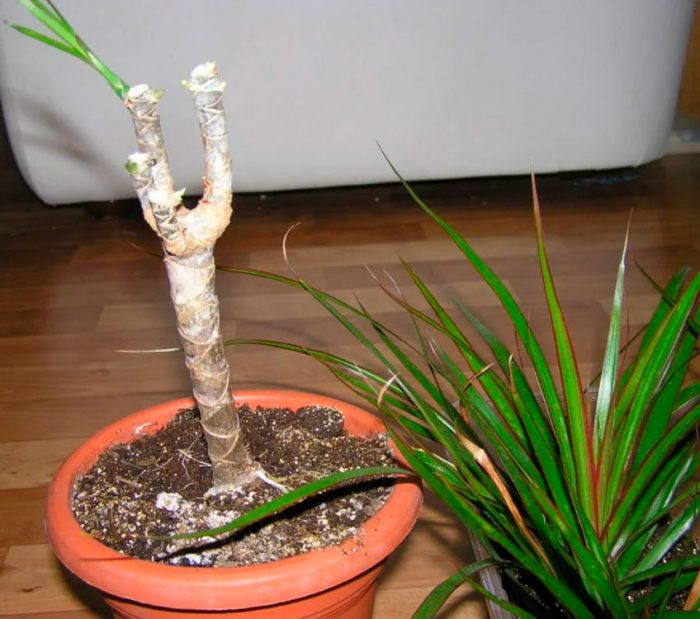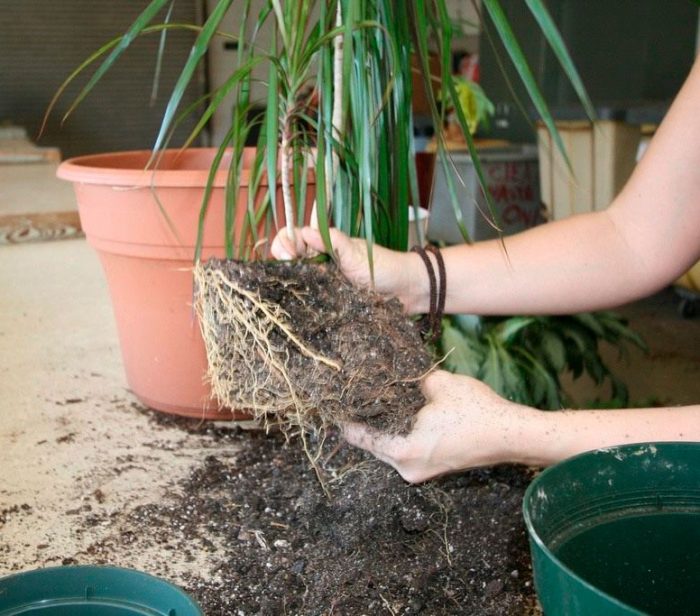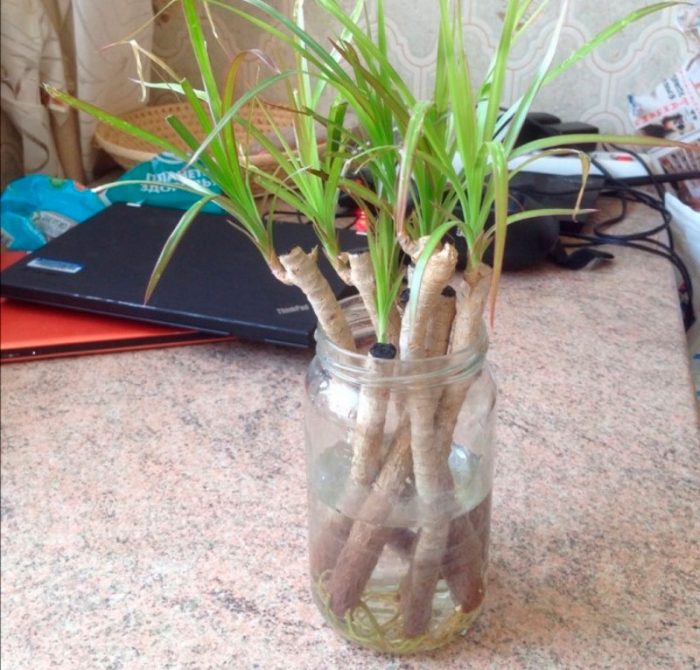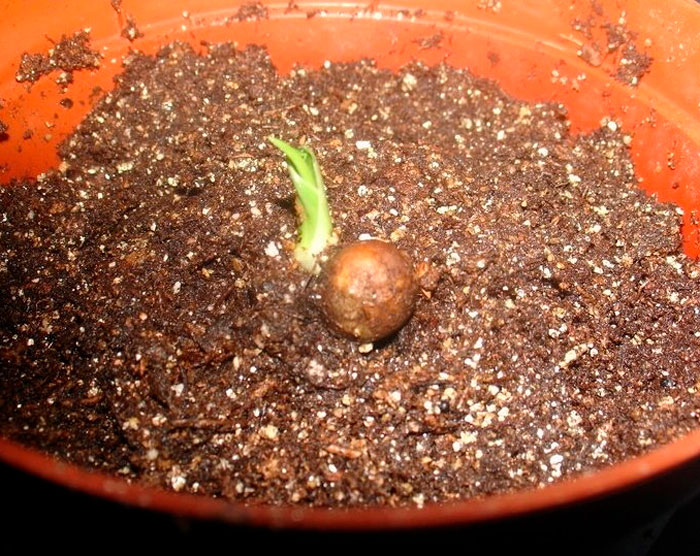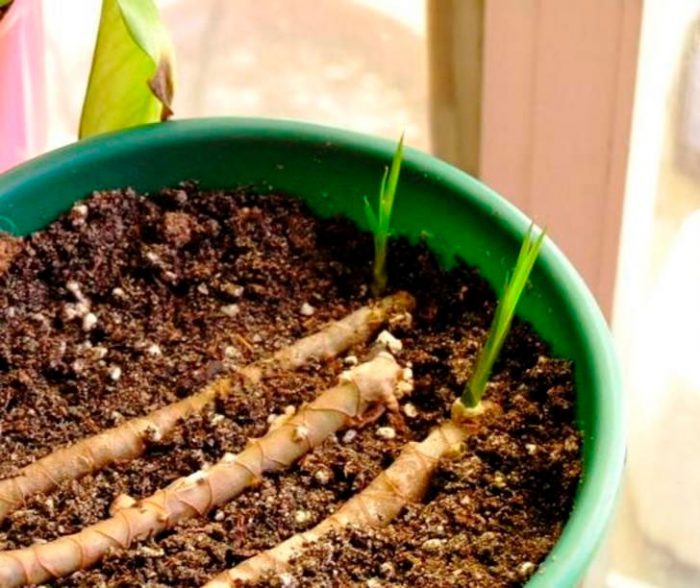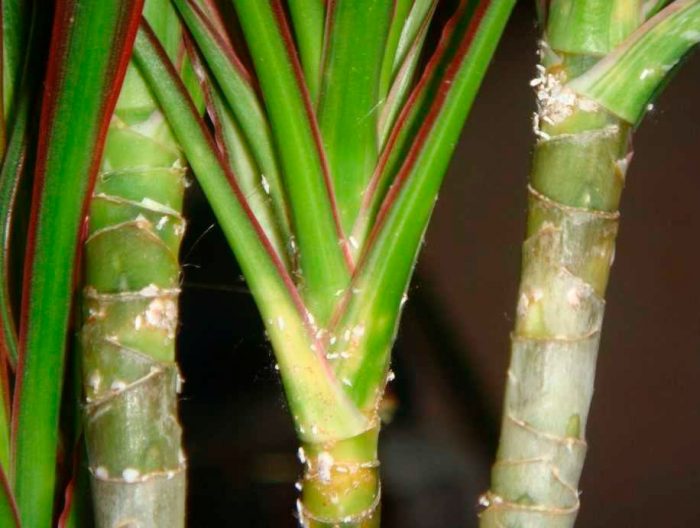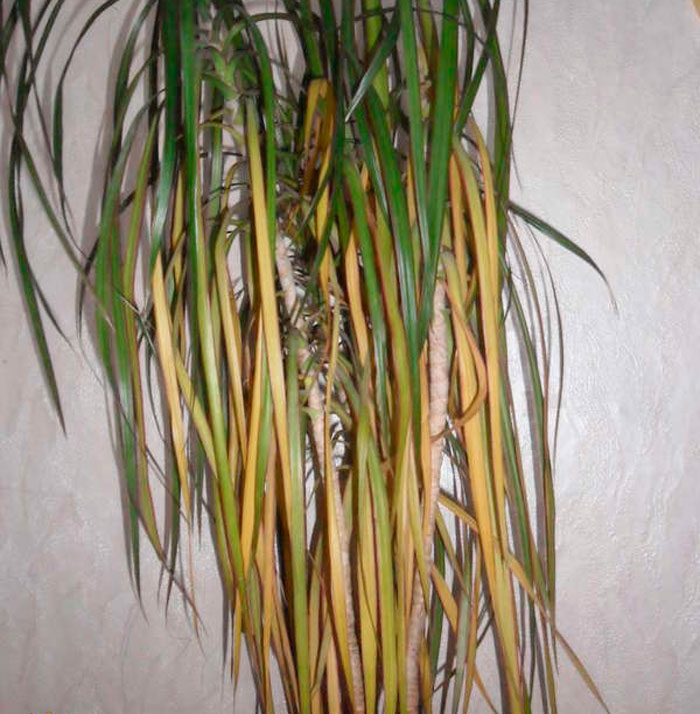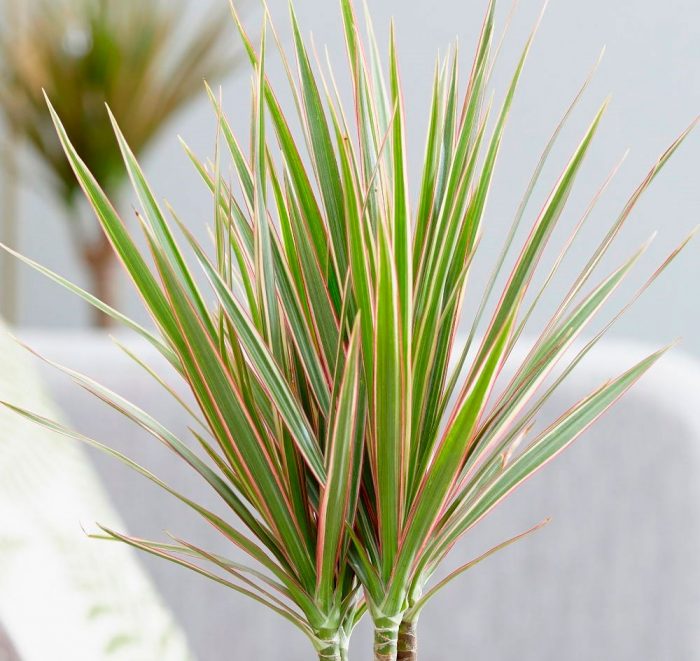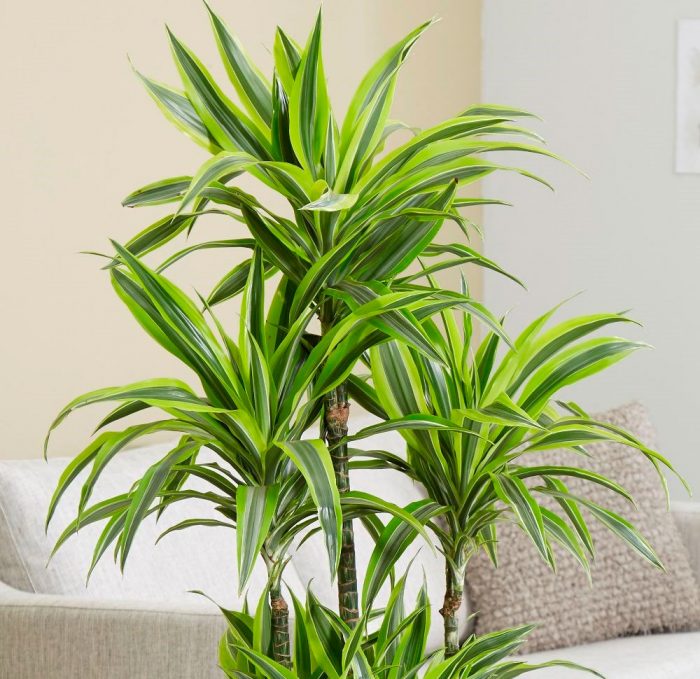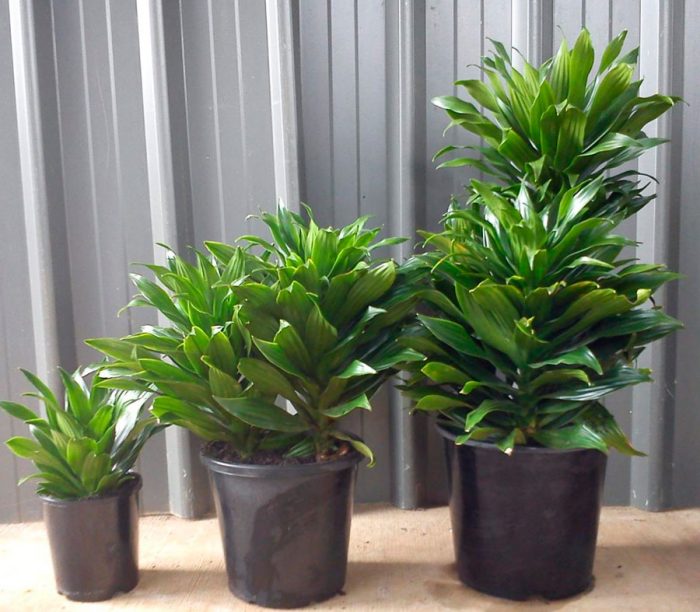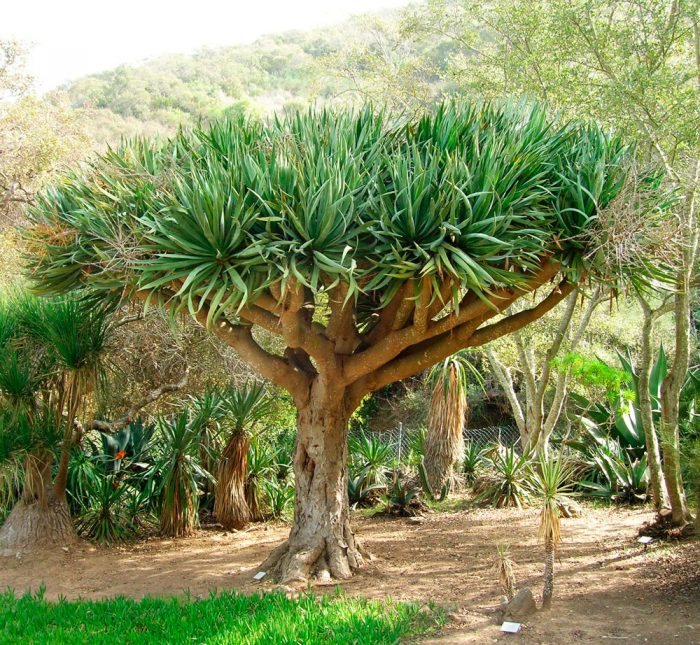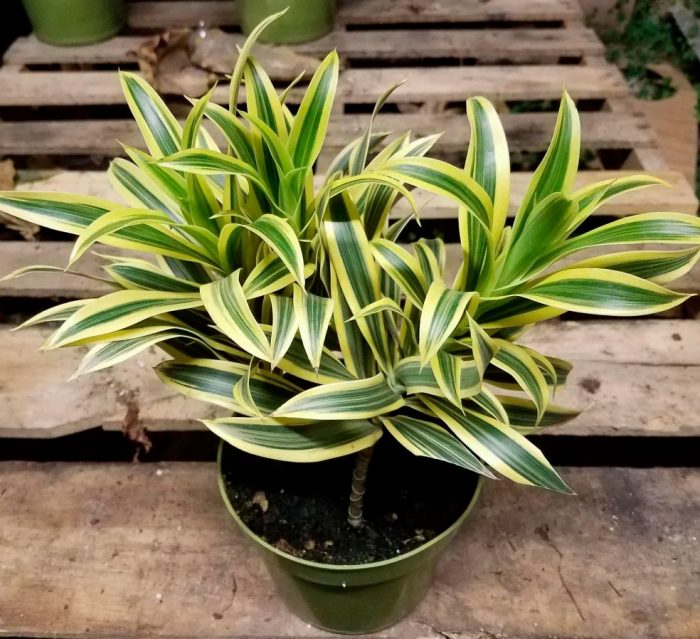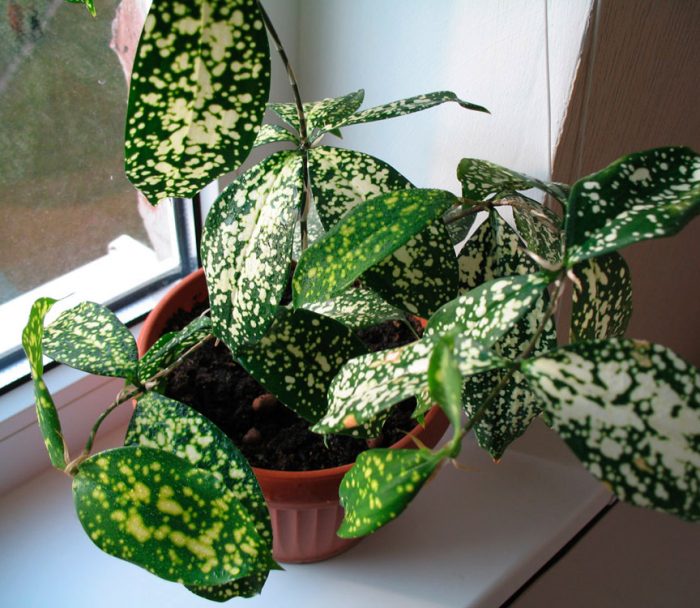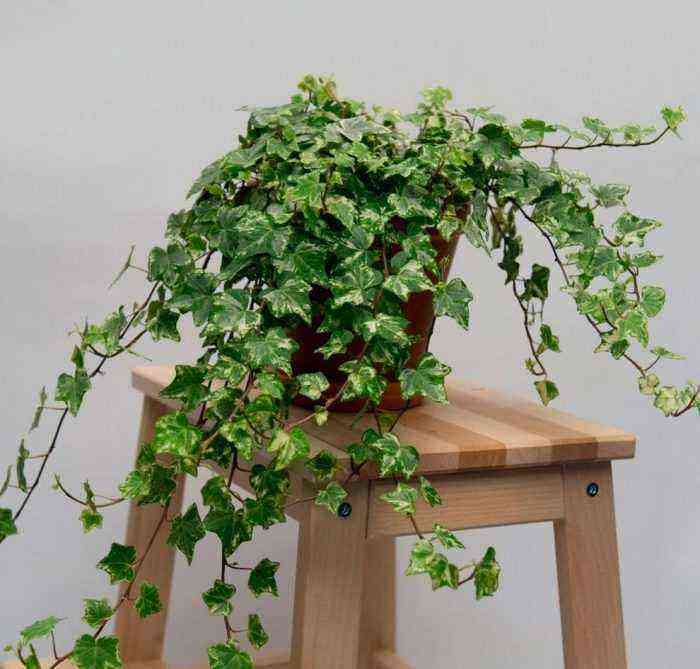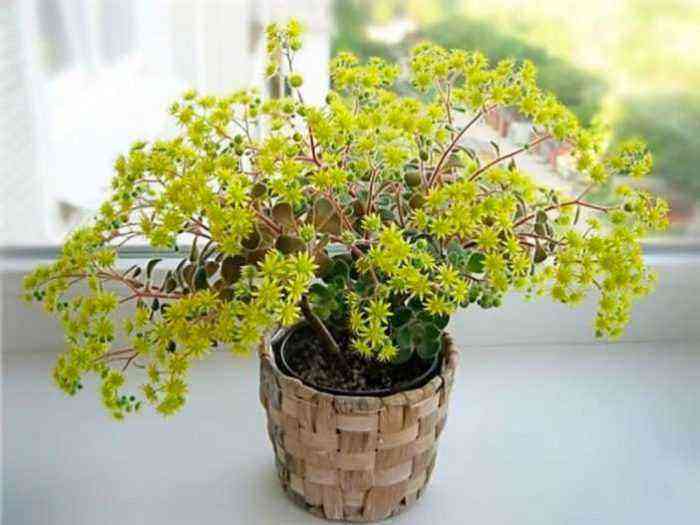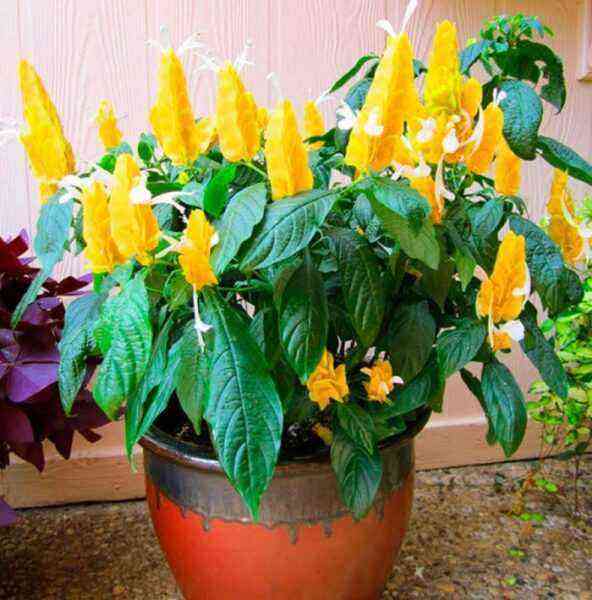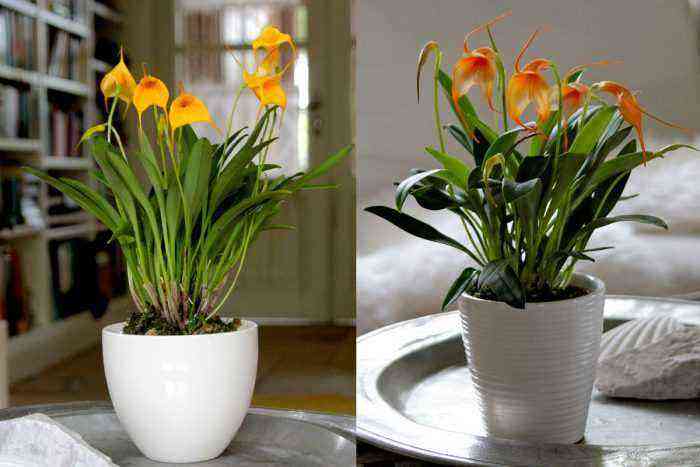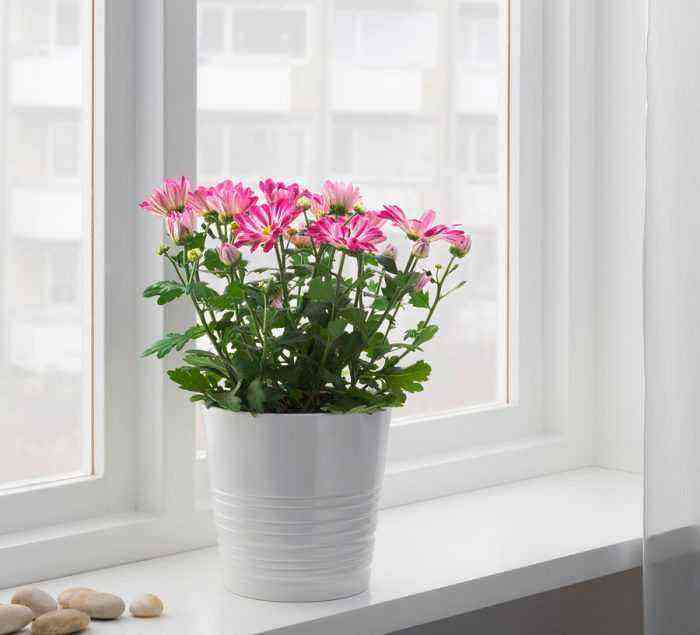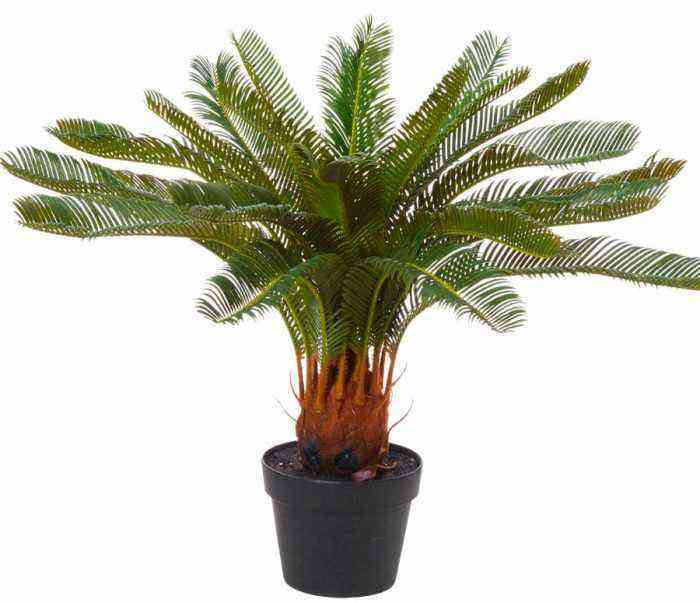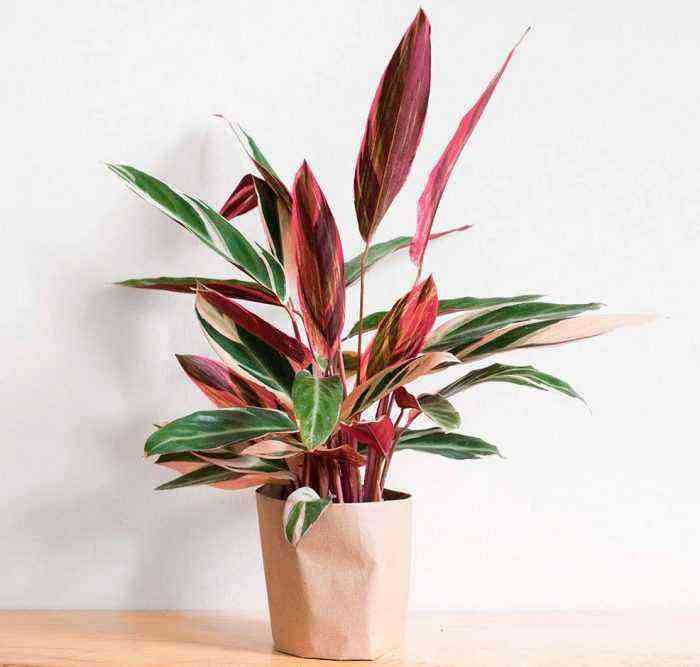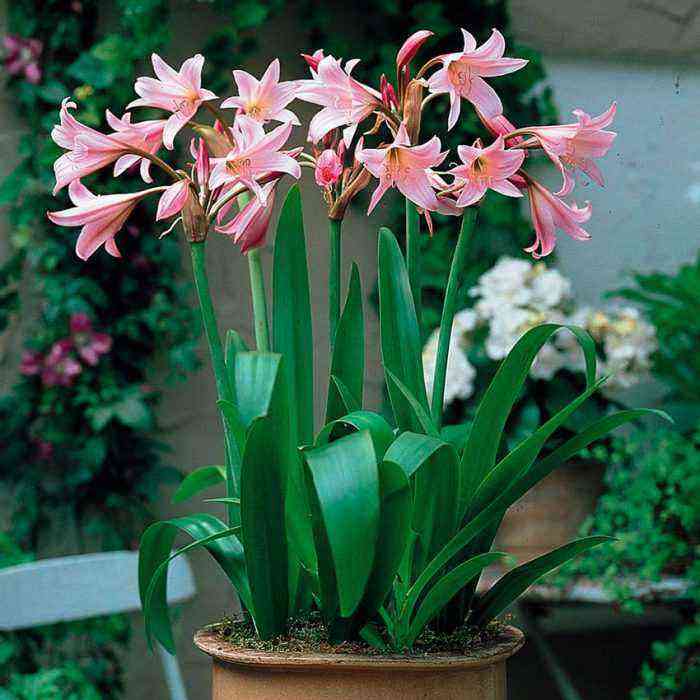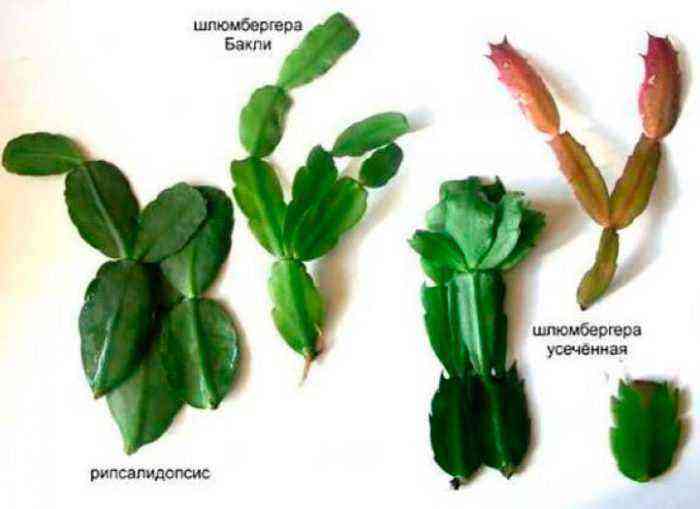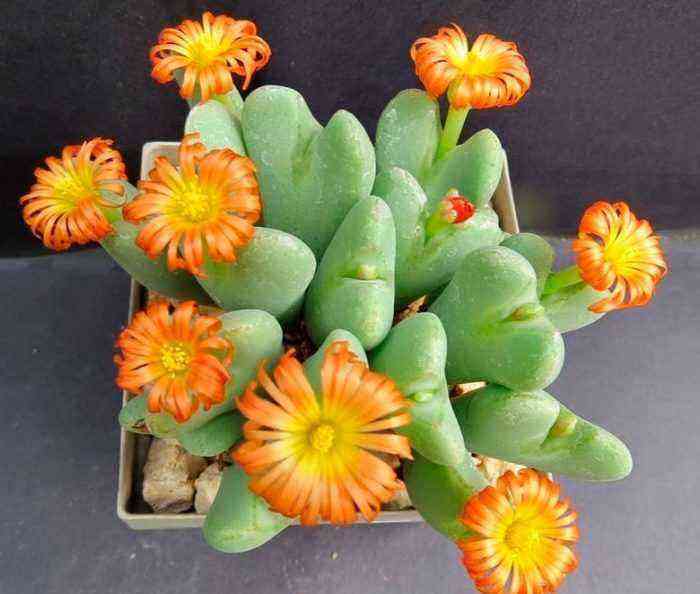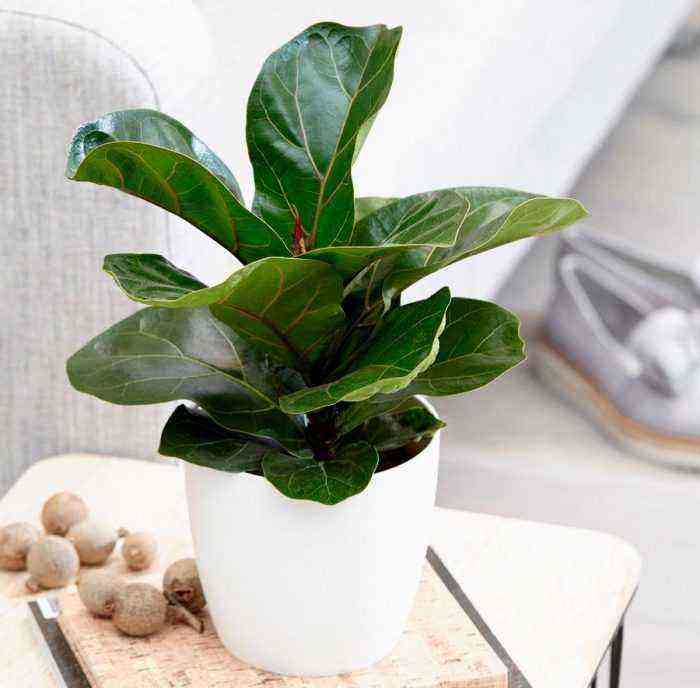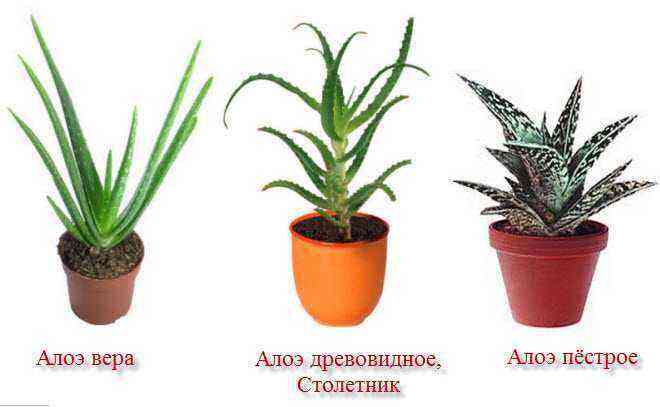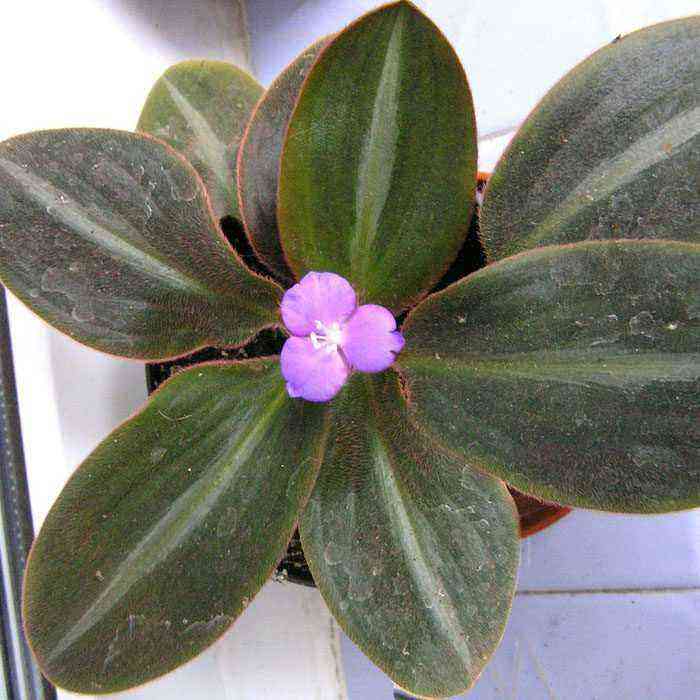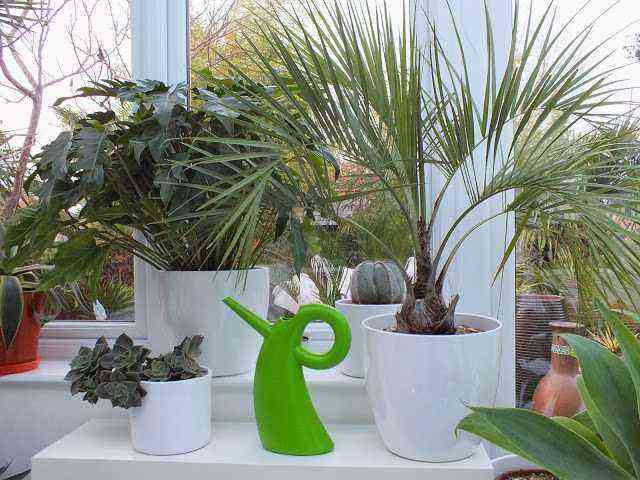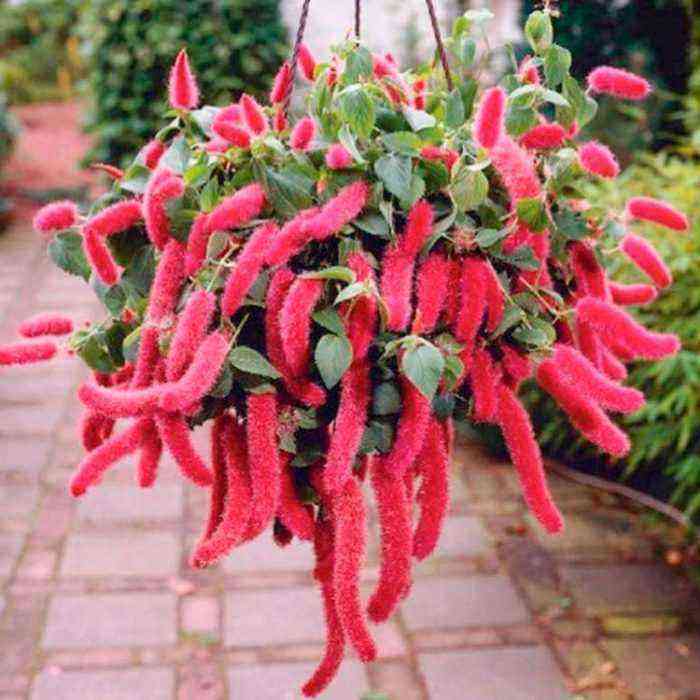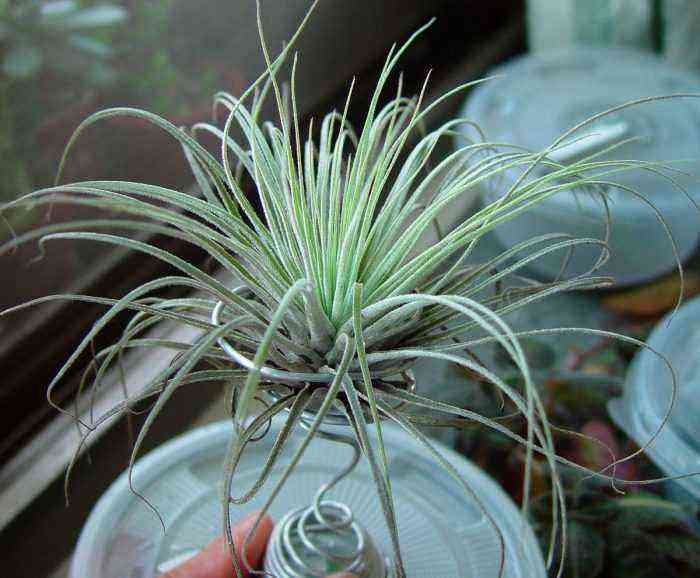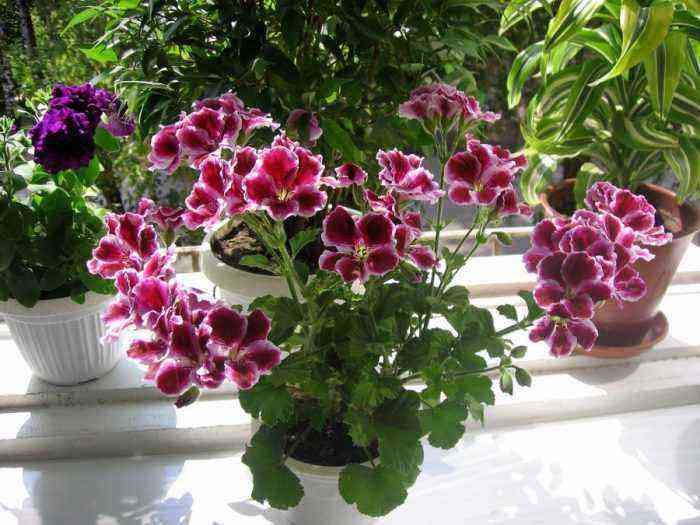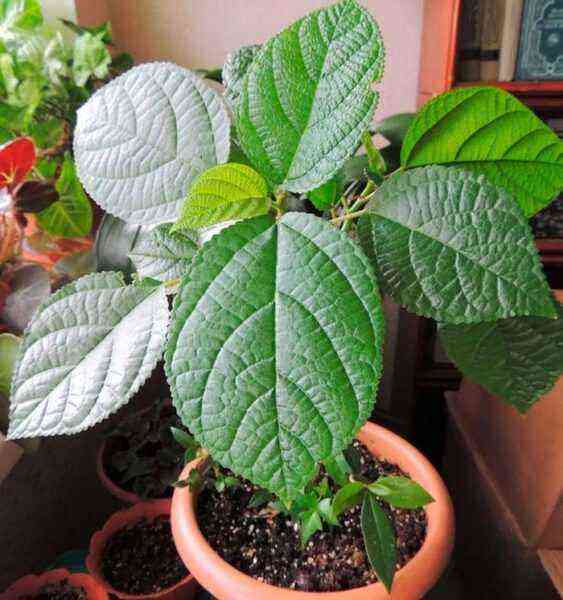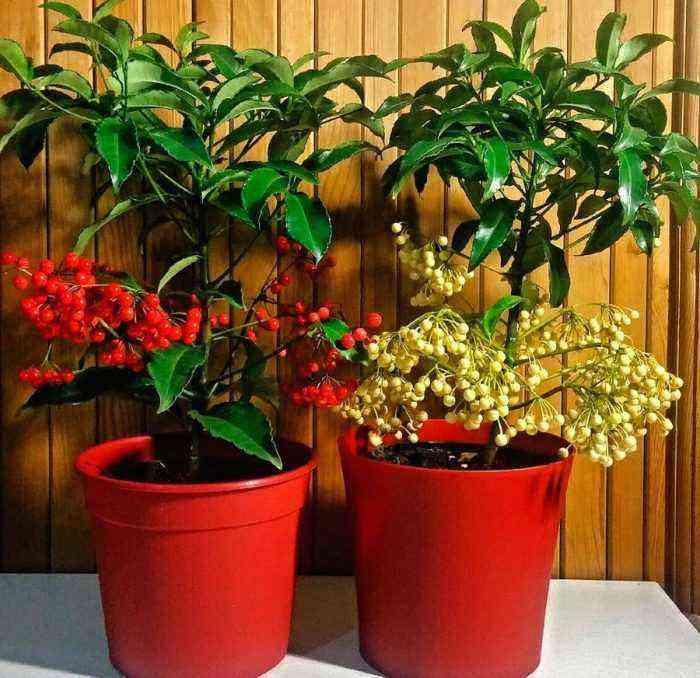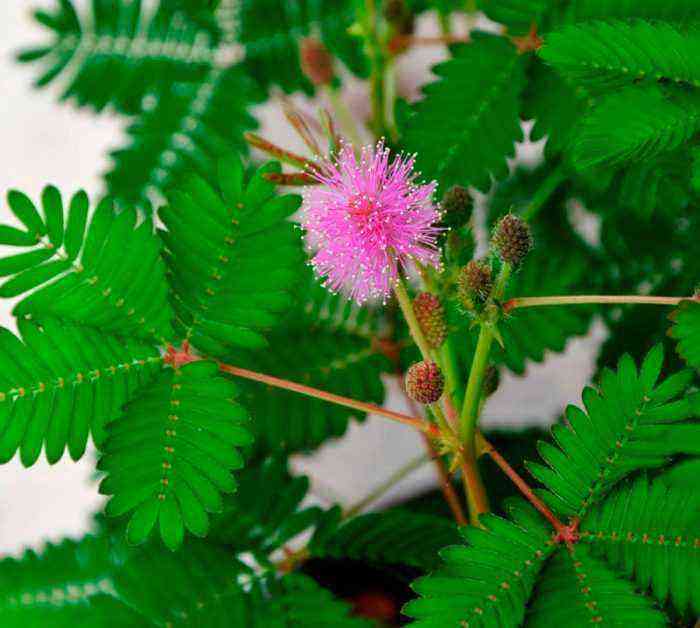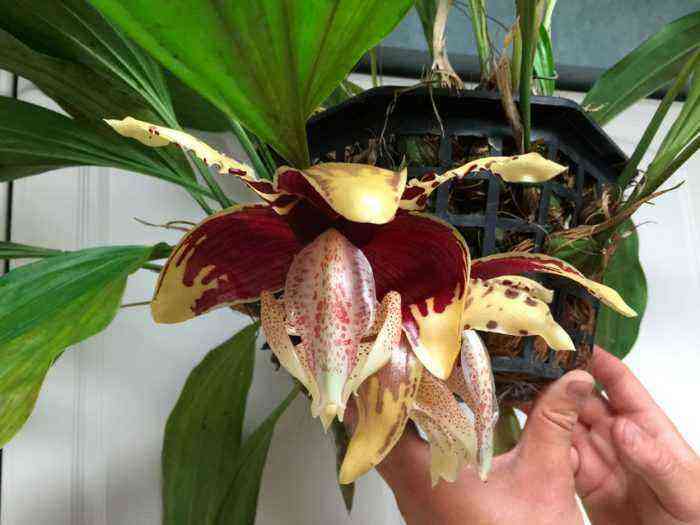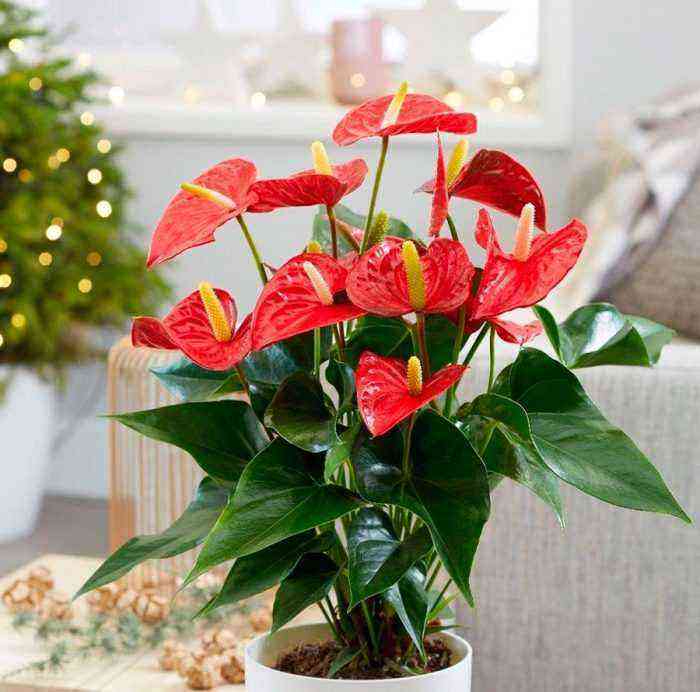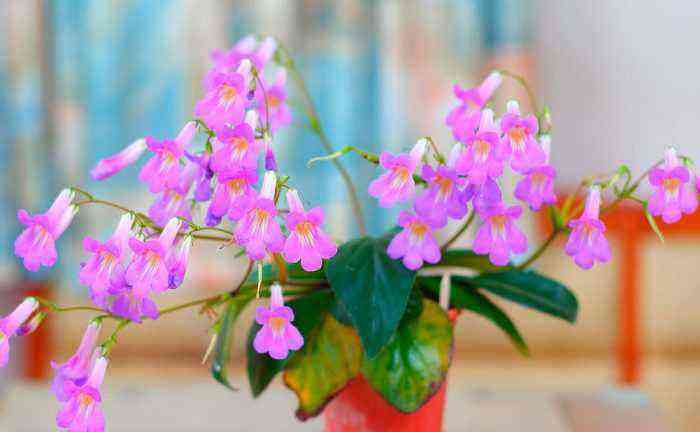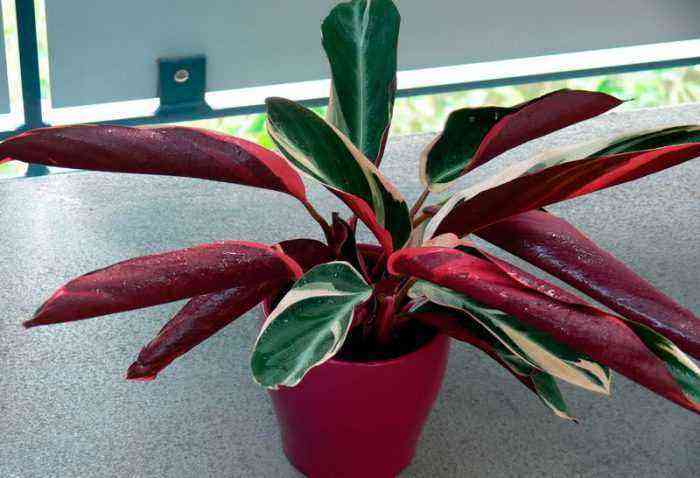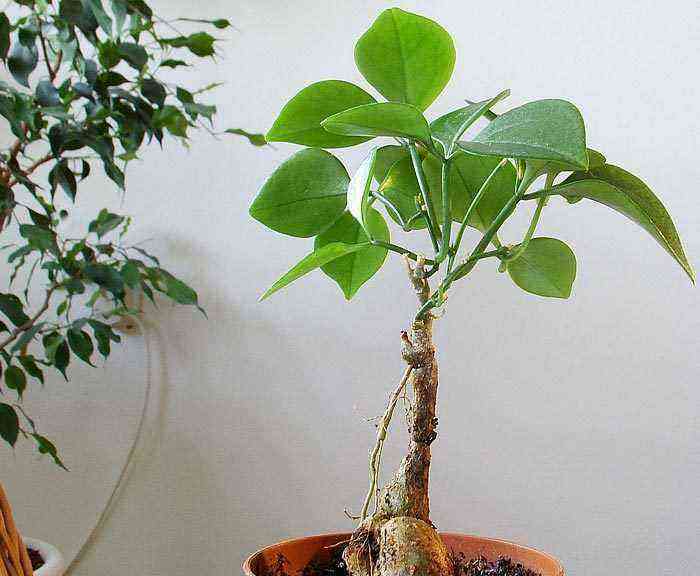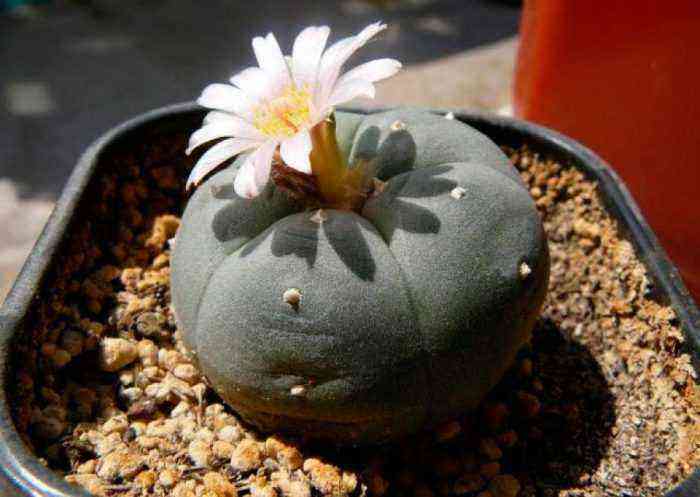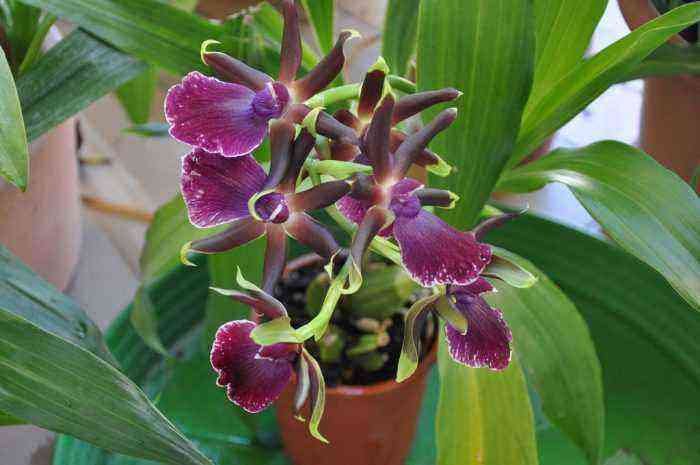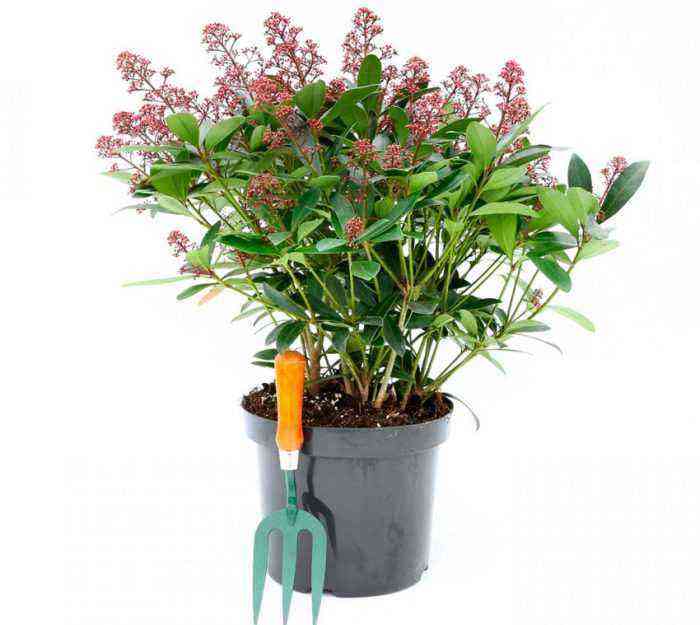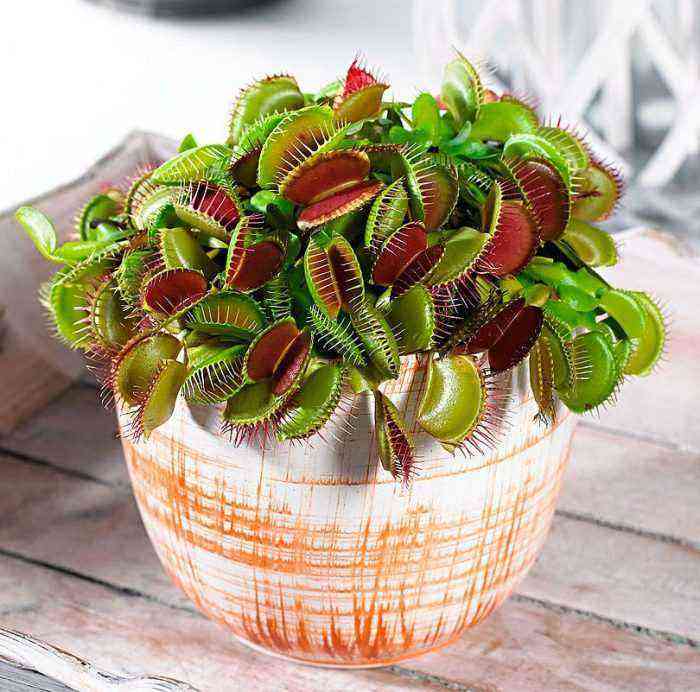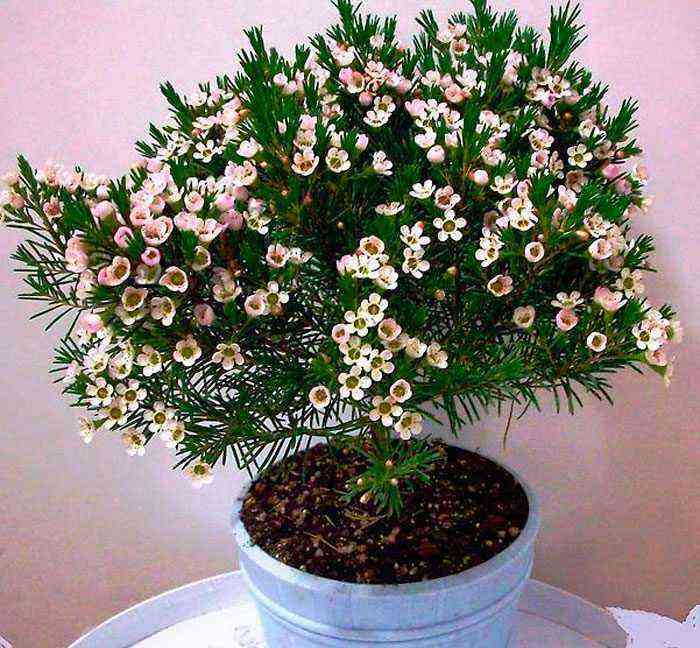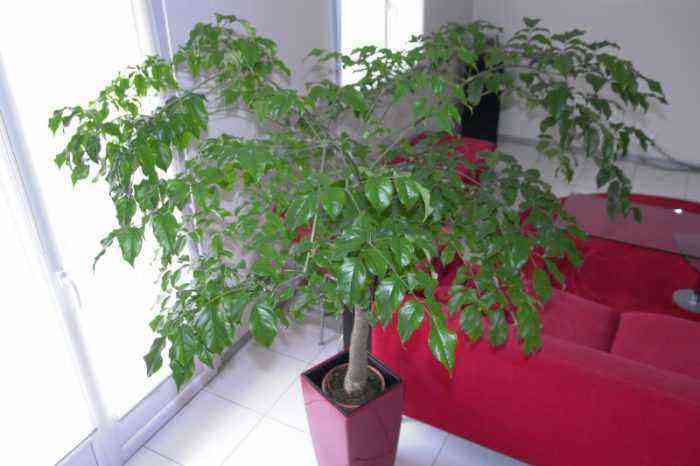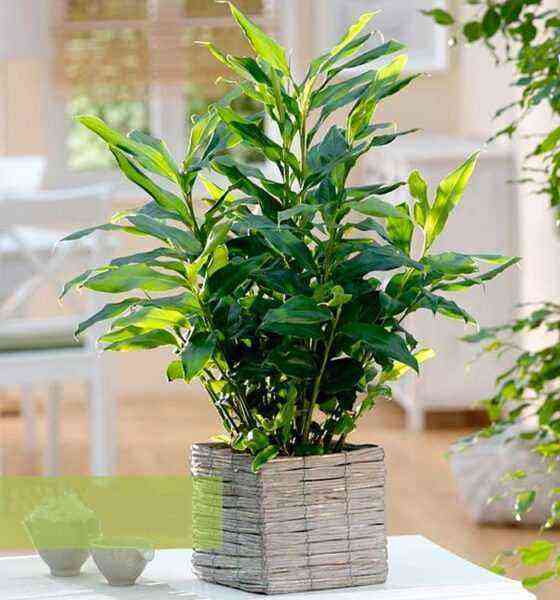There is a whole legend about the appearance of dracaena, which says that in order to get the hand of his beloved, a young guy must take a dry stick and make leaves appear on it. If you decide to decorate your house with dracaena, which is also called the “dragon tree”, then you, as in this legend, will have to spend a lot of time and effort to make the bush grow lush and spectacular. However, you should not be intimidated, because it is enough to know a few rules and secrets for you to succeed.
Brief description of cultivation
- Flowering . It is grown as an ornamental deciduous crop.
- Size . Large number.
- Illumination . In winter, the plant needs a lot of bright light, and in summer the bush can be placed in a little shade, for example, near a window with a south or west orientation.
- Temperature conditions . In the warm season – from 18 to 25 degrees, and in the winter months it is recommended to move the plant to a cool place, but the room should not be colder than 12 degrees.
- Watering . Water should be abundantly and systematically throughout the growing season. It is necessary to moisten the substrate only after its surface dries to a depth of 20 to 30 mm. If you provide the dracaena with a cool wintering, then you need to water it less often and more poorly.
- Air humidity . The bush must be systematically moistened with a sprayer, you can also periodically arrange a warm shower for it.
- Fertilizer . It is necessary to add a solution of complex mineral fertilizer for decorative deciduous plants to the substrate from April to September 1 time in 15 days. In winter, dracaena does not need fertilizers.
- The rest period . It starts in October and ends in April. However, the plant enters a dormant state only if it is in a cool room.
- Transfer . In spring, at the very beginning of the growing season, but only when necessary (on average, once every 2 or 3 years).
- Reproduction . Seeds, apical cuttings and stem pieces.
- vermin . Thrips, aphids, mealybugs, scale insects and spider mites.
- disease . Alternaria, phyllostictosis, or light brown spot.
Dracaena features
Dracaena (Dracaena) is part of the Asparagus family. This plant is represented by succulent shrubs and trees. It is most widespread in Africa, some of the species can be found in South Asia, and another species grows in the tropical part of Central America. Moreover, it is in Central America that there is an ancient Aztec legend about a young warrior who fell in love with the rain of the leader. At the same time, the formidable father of the beauty, at the request of the warrior to give his daughter to wife, said: take a stick, stick it into the soil, water it, and no later than 5 days later, foliage should grow on it. And a miracle happened, it was on the fifth day that foliage appeared on the stick, and it turned into a beautiful tree – dracaena. As a result, the warrior married the leader’s daughter, while the dracaena was popularly called the “tree of happiness”.
The name dracaena translates as “dragon”, or “female dragon”, as it is written in Dahl’s dictionary. In indoor culture, the most widespread tree species and varieties of dracaena, they look very similar to cordilins. In floriculture literature, this plant is sometimes called “false palm”, because the dracaena is very similar to a palm tree, but it is not.
The easiest to cultivate in indoor conditions are such species as: Dracaena Godseffiana, Dracaena marginata, and also Dracaena draco. Other types of dracaena are more demanding to care for.
For example:
- Water the plant with care. At the same time, stagnation of moisture in the soil mixture will harm it more than a short drought.
- In the summertime, the bush should be placed in a shaded area near a western or southern window.
- In the warm season, dracaena can be transferred to fresh air (on the terrace or on the balcony), while choosing a place in partial shade.
- In spring and summer, the plant should be kept at temperatures between 18 and 25 degrees. For wintering, the bush is rearranged to a cooler place (not lower than 12 degrees).
- In the winter months, the bush needs a lot more bright sunlight than in the summer.
- In winter, the air in the room is overdried by working heating devices, so the bush must be regularly moistened from a spray bottle 2 times a day. The plant can also be systematically given a warm shower.
Dracaena has a very effective appearance. According to information taken from various sources, from 40 to 300 species of this plant are known. While the bush is young, its weakly branching shoots are decorated with many sessile leaf plates leathery to the touch, which can be wide or lanceolate. The foliage can be solid green, but variegated dracaena is also found. And also there are species on the foliage of which there are stripes of various widths of pink, white or yellow color.
As it grows, the trunk becomes exposed, as well as its lignification, as a result, the bush takes on a majestic appearance. In some species, a bunch of foliage forms in the upper part of the bush over time, which makes it look very similar to a palm tree in appearance. There are also species in which leaf plates are placed on the stem in whorls or spirally.
Club-shaped roots do not form shoots, while they are colored reddish-yellow on the cut. Such a plant is characterized by extremely slow growth, but it lives for a very long time. At home, dracaena rarely blooms, but if this happens, then fragrant paniculate inflorescences will form on it, consisting of white or pale pink flowers.
This plant is quite popular in indoor culture because it is very effective and is distinguished by its unpretentiousness. Dracaena is used to decorate the interior, using it to compose compositions, as well as as a single plant. It can be used to decorate a hotel hall or lobby, winter gardens, offices, large shopping centers, a spacious room, etc.
Dracaena care at home
It is quite easy to grow dracaena at home, because it is an unpretentious plant.
Lighting
For this plant, you should choose a well-lit place next to a window of western or southern orientation. However, remember that the foliage must be protected from direct rays of the sun, but you cannot put the dracaena in a strong shade. Variegated forms are more light-loving and thermophilic in comparison with green-leaved varieties and species.
Feeding
During the growing season, which begins in April and ends in September, top dressing is carried out once every 15 days. To do this, use granular or liquid complex fertilizer for decorative deciduous plants. In the autumn, after the beginning of the dormant period, the plant cannot be fed.
Temperature conditions
In summer, the optimum air temperature is from 18 to 25 degrees. And in winter, it should not drop below 12 degrees.
Water dracaena
This plant should be watered systematically and abundantly, while doing this only after the top layer of the substrate dries out 20-30 mm deep. During watering, do not allow stagnation of moisture in the soil mixture, as dracaena reacts extremely negatively to this. Before watering the plant, be sure to carefully loosen the top layer of the substrate. The bush should be watered with well-settled or filtered water.
In summer, watering is carried out on average once every two days. If the surface of the substrate has time to dry to a depth of 20-30 mm faster, then watering should be carried out more often. Remember that dracaena needs high air humidity, for this in the summer it must be humidified from a spray bottle, and water must be used whose temperature is close to room temperature.
If the plant stands in a cool place in winter, then the number and frequency of watering should be reduced. However, if it is located next to a working heating device, then watering and humidification will need to be carried out even more often than in summer. Otherwise, the bush may dry out.
Dracaena pruning
Обрезка драцены совмещается вместе с размножением. Ее проводят в том случае, если куст утрачивает свою декоративность. Это связано с тем, что часть видов, а именно, драцена душистая и драцена маргината, в высоту могут дорастать до 200–300 см, при этом листва имеется лишь в верхней части. В результате куст утрачивает свою привлекательность. Чтобы это исправить, цветоводы срезают верхушку куста, которую затем укореняют. При этом та часть растения, которая осталась в горшке, так же продолжает расти и на ней появляются листья. В результате у вас получится 2 красивых куста вместо одного. Такая обрезка по своей сути так же является и размножением драцены верхушечными черенками.
Растение можно обрезать двумя методами:
- Rooting air layer . Stepping back slightly from the top of the bush, an incision should be made on the trunk, the shape of which should be T-shaped. A small amount of moistened peat is placed in this incision, after which it is fixed on top with a plastic wrap. Young roots should appear at the incision site after about 4 weeks. After that, using a very sharp tool, it is necessary to cut off the upper part, slightly stepping down from the new roots. Next, the top is transplanted into a new pot.
- Rooting the trimmed tip… First, prepare a new pot and make a good drainage layer on the bottom. Then a soil mixture is poured into it, which is spilled with settled water. With the help of a pre-sterilized very sharp knife, it is necessary to cut off the upper part of the dracaena along with the trunk from 10 to 15 centimeters long. The place of the cut is sprinkled with coal powder. The cut at the top must still be processed with Zircon, after which all the lower sheet plates are cut off from it. Then the piece is planted in a prepared pot, which is filled to the brim with soil mixture. If there are a lot of upper leaf plates on the cuttings or they are too large, then it is recommended to shorten them by 1/3 part, which will help it to form a powerful root system. The part of the stem that remains in the pot without the top should be “covered” with molten paraffin. They continue to look after her the same way as always,
Dracaena transplant
The bush is transplanted only when necessary (about 1 time in 2 or 3 years). Its root system is superficial, and therefore a thick layer of drainage must be made at the bottom of the pot so that liquid does not stagnate in it. It is recommended to buy a ready-made soil mixture intended for growing palm trees.
In the event that the soil mixture in the pot is not yet depleted, but it is already necessary to transplant the flower, then the bush is simply transplanted by transferring it into a new larger pot while preserving a lump of earth. Do not forget to make a thick layer of drainage at the bottom of the pot, and also water the overloaded bush abundantly.
The transplant can be carried out when it is most convenient for you, regardless of the time of year. But the spring period is best suited for this procedure. A new clay pot should be rinsed with freshly boiled water before transplanting. After that, it is kept in water for a short time, which will allow the pores in the clay to open.
Place a clay shard on the bottom of the pot, with its convex side facing up. This will allow excess liquid to drain freely into the sump. A drainage layer with a thickness of 20 to 30 mm is laid on top of the shard, a layer of coarse sand or perlite. The prepared soil mixture is poured into the pot in a slide. Remove the shrub from the old pot and place it in the center of the new one. Gently straighten its root system, then fill the container with soil mixture, and it should be poured from all sides. Do not forget to periodically tap the pot on the floor, this will allow the substrate to lie down well and fill in any voids. After the pot is filled with substrate, its surface should be lightly tamped. Next, the bush is watered and its foliage is moistened with a sprayer. Move it to a warm and shaded place.
Methods of reproduction
Reproduction of dracaena forms with variegated foliage occurs only vegetatively, or rather, by stem segments or by an apical cuttings. At the same time, green-leaved species are propagated both vegetatively and by seed.
Reproduction by cuttings
How this plant can be propagated by apical cuttings and layering is described in great detail in the “Pruning” section. It should be added that if you are afraid to plant the trimmed apical stalk immediately into the soil mixture, then you can first put it in a container with water for rooting. And when the roots grow out, the cuttings are planted in the soil mixture.
Cultivation from seeds
Dracaena seed material needs pre-sowing preparation. To do this, it is kept for 24 hours in a solution of a growth-stimulating agent, for example, in Zircon. In this case, the solution must be necessarily warm (about 30 degrees). Fill a small container with palm soil and sow the seeds. After the crops are watered, they are covered with glass or foil on top, and then transferred to a place where it is always warm. The first seedlings should appear after 1-2 months. Once this happens, remove the cover from the container. Seedlings are watered and fed once a month with a solution of a mineral complex fertilizer. The plants are transplanted into a permanent pot only after their height is 50-60 mm.
Propagation by segments of the stem
Комнатную драцену можно размножить и отрезками стебля. Данная процедура очень похожа на черенкование. Вам понадобится мощный молодой стебель, который острым продезинфицированным ножом делят на несколько отрезков. Они должны достигать в длину от 30 до 50 мм. Обратите внимание на то, что на каждом отрезке должно быть минимум 2 почки.
С одной из сторон отрезка сделайте надрез на коре. После чего его заглубляют этой стороной в почвосмесь. Уберите высаженный на укоренение черенок в теплое затененное место, причем сверху его следует накрыть прозрачным колпаком, к примеру, обрезанной пластиковой бутылкой. Своевременно поливайте отрезок, а когда на нем спустя 4–6 недель образуются новые побеги, их систематически увлажняют из опрыскивателя.
Вредители и болезни драцены
vermin
Dracaena, growing at home, is quite resistant to pests. However, scale insects, aphids, mealybugs, thrips and spider mites can still settle on it. If any of these pests settle on the plant, then it can throw off the injured leaf plates. If there are few pests, then you can try to get rid of them with a soap solution, they should regularly wipe the surface of the foliage and stems. If spider mites have settled on the plant, then a hot (about 50 degrees) soap solution is used to wipe it. When the dracaena is wiped with this solution, it should be treated with a suitable insecticidal agent.
Yellow foliage
The yellowing of the leaf blades in the lower part of the bush is a completely natural process. Each leaf plate lives on average for 2 years. Old foliage dies off slowly. And if the yellowed plates spoil the appearance of the bush, then just carefully remove them and that’s it.
Yellowing of young leaf plates should cause alarm. This means that you are watering the bush incorrectly. Remember that you need to moisten the substrate immediately after it dries to a depth of 20-30 mm, no more. Do not overdry the earth lump.
Why dracaena dries
If the edges of the foliage begin to dry, and the tips turn brown, then this indicates excessively dry air in the room. Moisten the plant systematically with a spray bottle.
If the bush has not been transplanted for 3 or 4 years in a row, then salts may accumulate in the soil mixture, which prevent the root system from fully absorbing nutrients. In some cases, the tips of young foliage may begin to blacken and dry out due to an excessive amount of fertilizer applied to the substrate. In this case, the soil mixture becomes unsuitable for further growth and development of the bush, while the suction roots die off. In this regard, if the bush begins to dry out, but at the same time you water it well, you should definitely replace the soil mixture completely.
Why does rot appear
Как правило, изначально гниль появляется на верхушке листовой пластины, а потом начинает постепенно распространяться дальше. Появиться гниль может из-за бактериоза, который является инфекционной болезнью. А еще причиной этого может стать скудное освещение, низкая температура воздуха и регулярный застой влаги в субстрате. Также к этому может привести чрезмерно плотный бесструктурный либо тяжелый субстрат. Устранив имеющиеся проблемы и срезав пораженную листву, вам может быть удастся спасти растение.
При бактериозе на листовых пластинах появляются гниющие мокрые пятнышки, при этом между загнившей и здоровой тканью проходит полоска желтого цвета. Больную драцену вряд ли удастся вылечить. Развиться бактериоз может по следующим причинам: чрезмерно высокая влажность, высокая температура воздуха, нехватка фосфора и калия, а еще слишком щелочной субстрат.
Why dracaena falls
It was already mentioned above why foliage can turn yellow and fly around. However, it also occurs when the leaf plate suddenly becomes faded, loses its turgor, and then dies off. The reason lies in the fact that the dracaena was exposed to too low an air temperature, or rather, it was frozen. Transfer the bush to a warm place and moisten it with a spray bottle using warm water. It is recommended to transplant the bush into a fresh substrate, while cutting out all rotten roots. You can also save the dracaena by cutting off and rooting its upper part.
If moisture systematically stagnates in the substrate, and the earthen lump is supercooled, this can also lead to leaves flying around, since rot appears on the root system. Then the stem also rots. Therefore, you can try to save the bush by cutting off the healthy parts of the stem from it and rooting them.
Also, this culture can get sick with such infectious diseases as: Alternaria, light brown spot and phyllosticosis. As a rule, this happens with old bushes, which are poorly looked after. To cure a sick bush, it is recommended to treat it with a solution of a fungicidal preparation, for example, 2 grams of Fundazole for 1 liter of water. You need to spray the bush three times with a break of one and a half weeks.
Types of dracaena with photos and names
Dracaena marginata
The height of such an elegant bush is more than 3 m. The stem becomes lignified over time. The length of curved narrow leaf plates can vary from 0.5 to 0.7 m. The color of the foliage depends on the variety. It can be just green or have a strip of dark purple on its surface. Also, the leaves can be decorated with a wide strip of yellow or red.
Dracaena sanderiana
This shrub has a thin, short trunk. Unlike other species, its leaf plates are greenish-gray, short and twisted. Such a compact plant has a height of no more than 0.8 m. Cuttings cut from a bush root well in water. This species does not need additional hydration of foliage from a spray bottle. It is also called the “bamboo of happiness”.
Dracaena fragrans
The inflorescences of this species have a very pleasant smell. The height of the peduncle is about 0.9 m, at its top inflorescences are formed that look more like small fluffy balls. At home, the species rarely blooms. The foliage collected in a rosette can be about 100 cm long and up to 10 cm wide. The glossy leaf plates are decorated with a wide yellow stripe.
Dracaena compact
Such a graceful plant is a kind of fragrant dracaena. Its narrow leaves are dark green (almost black) in dense bunches. They have a shiny surface. Some specimens of this variety are rather large, despite the name.
Dracaena deremskaya (Dracaena Deremensis)
The slender stem of this spectacular plant can reach a height of about 1.5 m. It is decorated with large bent dark green leaf plates that are leathery to the touch. On their surface there are 2 white longitudinal stripes.
Dracaena dragon (Dracaena draco)
Outwardly, the bush looks like a large cactus: on its thick branches, pointed leaf plates grow, collected in bunches. This slow-growing species can sometimes branch out. If you injure the plant, then it will release a colorless resinous sap, which becomes blood-red in the air. This juice is also called “dragon’s blood”.
Dracaena reflex (Dracaena reflexa), or dracaena unfolded
The vigorous bush is decorated with dense foliage. The branching trunk has several leaf rosettes on each of the branches. Long, wide, downwardly curved leaf plates are pointed at the apex. They are olive green and have a cream-colored border.
Dracaena Godsef (Dracaena surculosa)
Outwardly, this plant is very different from all other types of dracaena. The height of the bush is only about 0.6 m. It is decorated with oval leaf plates, pointed at the top. On their surface there are many specks or specks of white or cream shade. Because of this, the species is also called “golden dragon”.
